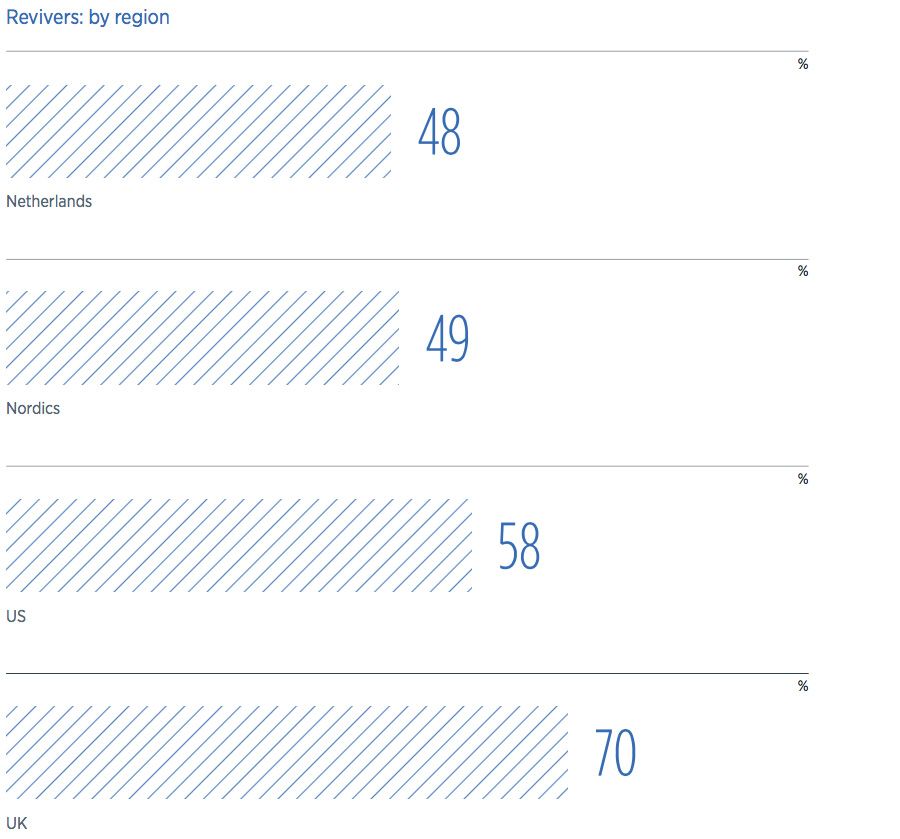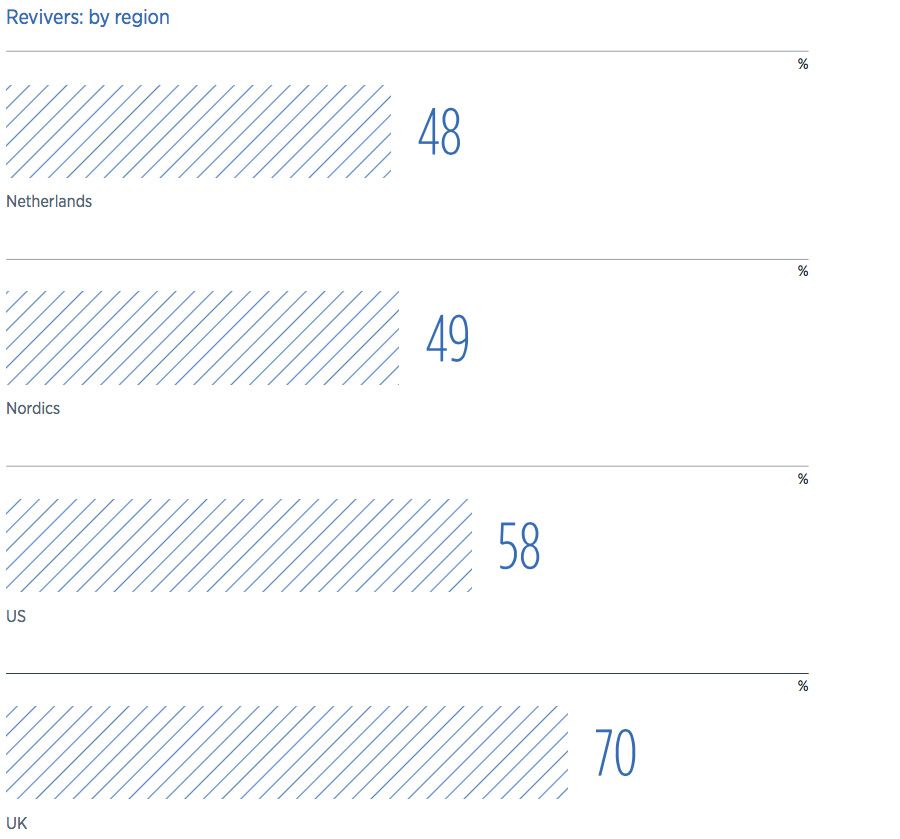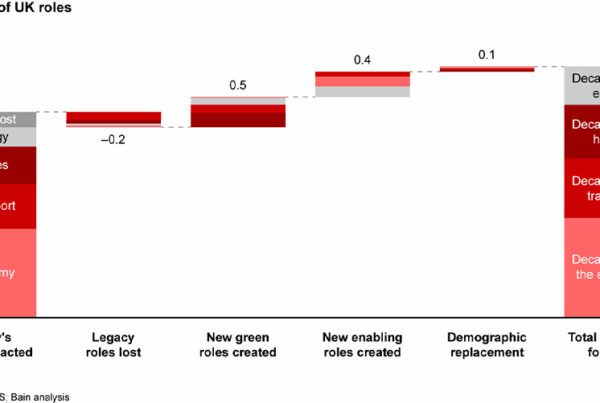Two-in-three leaders say they urgently need to refine their leadership approach as workforces look to them to improve performance in the post-lockdown era. A new study has identified five ways in which leaders can positively transform their firm’s behaviours.
To better understand the behaviours driving leadership, PA surveyed over 300 business leaders from across the US, UK, and Europe, developing a snapshot of the issues leaders are facing. The data highlights a worrying split between revivers and survivors.
These two categories highlight two very different approaches to ensuring a business is best set up for success. Revivers focus on acceleration, transformation, and investment in growth and innovation – representing around 56% of respondents. Survivors, meanwhile, focus on cost reduction and sustaining pace of change – and accounted for 44% of businesses.

Charlene Li, Chief Research Officer at PA Consulting, commented, “As companies move out of the pandemic, they need to decide if they want to be a survivor or a reviver. Now is the time to reexamine leadership styles and prepare for the road ahead. The key action every leader should take is to step out of the comfort zone and into the growth zone to stretch, but not stress, themselves and the team.”
Survivors were most likely to come from the Nordics region, or the Netherlands – where they both accounted for more than half of respondents. In the UK’s case, however, the country hosted the largest portion of revivers found in the survey – at 70%. According to PA, leaders who do not put these behaviours into practice risk becoming irrelevant and ineffective, so to help the remaining 30% think more like revivers, the firm compiled a five-point guide to transforming leadership behaviour.
Get out of the comfort zone
Businesses need to strike the right balance between tension and peace. While firms are rightly concerned with creating a safe space for workers, where they can perform to the best of their abilities, they also need an element of carefully crafted tension to make progress. Top leaders find ways to push employees out of their comfort zone, breaking down silos and guiding their team towards opportunities for individual and collective progression.
“While the siren call of the comfort zone remains alluring, carefully crafted tension is needed to make progress – guiding people towards opportunities for individual and collective progression,” the analysts explained.
Cultivate kindness
PA went on, “Kindness is the most direct way to empower your people to try new things, to take risks, and to do so safe in the knowledge that they won’t be targeted as a result. And it’s scientifically proven to be effective.”
Emotional intelligence and empathy are therefore an important counter-mechanism to tension-driven growth. To help individuals feel supported when they respond to pressure, leaders should empower teams to try new things, to take risks, and to do so safe in the knowledge that they won’t be targeted as a result. Respondents were almost twice as likely to report that their company was performing well financially when leaders were kind in this way.
Catalyse internal disruptors
Long-term change cannot only come from the C-suite, where leaders are not guaranteed to be in place in another five years. This can breed short-termism among executives, who feel they have to focus on keeping things on track in the here-and-now. Boards can change this by giving more of a voice to disruptors, however, and give a broader backing to CEOs willing to try new things, take risks, and be agile can inspire their whole organisation.
Noting one way of doing this, the researchers said, “Broadening perspectives with more diverse voices would support bold change and brave leadership. A Shadow Board is just one way to achieve this – giving more voice to disruptors on the board. It’s an extension of reverse mentoring, where leaders open themselves up to new approach, to challenge, and to learning from others. Crucially, it brings disruptive thinking and an experimental mindset; those willing to challenge convention and drive disruption from the inside.”
Make authenticity everything
Almost four in five leaders say employees, customers and investors are increasingly looking for organisations to demonstrate behaviours that drive wider social value. This means firms must go beyond their remit to provide products or services, and have a purpose, incorporating ESG drives into their offerings. This goes beyond the company to its ecosystem to, as no company operates alone, and consumers realise the interconnectedness of everything.
Another example of this came from Scandinavian outdoor brand Haglöfs. Recently, the firm openly announced it was “cheating” at achieving carbon neutrality by investing in offsetting, adding that “[offsetting] should never get in the way of the real work of reducing [our] own emissions”. In recent times, this has seen it reorient its offering on ‘Black Friday’ – acting to discourage unnecessary consumption and expenditure by increasing its prices, and giving all Black Friday profits to charities, while offering customers second-hand collections instead of consuming new items.
Nurture innovation and collaboration
For many leaders, the past few years have seen firms lose spaces where innovation flourishes. Collaborative spaces in the office are used less and less as the home working of the lockdown months continues. There’s also less time spent commuting in spaces where a random thought might crop up. Leaders need to work with these changes in mind, to empower workers to actively seek out in-between spaces, moments and approaches where they can come up with something new.
Rachael Brassey, Global Lead for People & Change at PA Consulting, concluded, “Leadership is relevant to everyone, regardless of seniority or rank. The leadership that today and tomorrow demands calls for a subtle shift, and leaders need to nurture optimism, empower teams, build an evolving organisation, and seek inspiration in surprising places to carve out a competitive advantage.”




